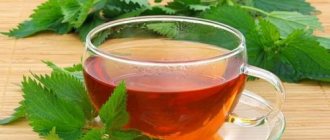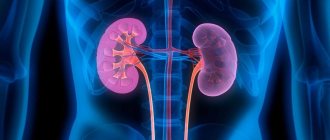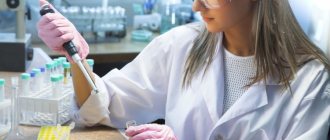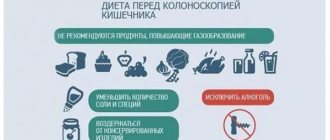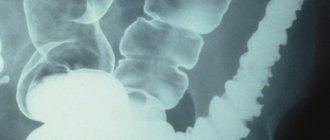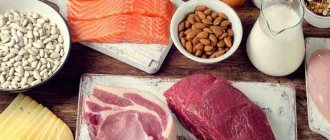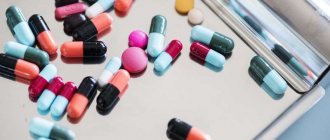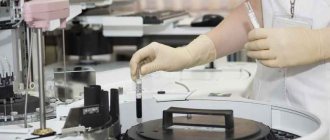Creatinine is a metabolite formed primarily in muscles during protein-amino acid metabolic processes. It is excreted from muscle tissue into the blood, and from there through the urinary system (that is, the process of creatinine formation is completed in the kidneys). Based on the level of this metabolite in the blood, doctors indirectly diagnose kidney function.
According to research , a person’s diet directly affects the level of creatinine in the body.
In this article, we will discuss what causes elevated creatinine levels. What can you eat if you have this problem? And most importantly, what diet will help reduce their concentration in the blood plasma? In general, should you be concerned about high creatinine levels?
What affects the amount of creatinine?
Creatinine is formed and participates in the process of energy metabolism in muscle tissue. It is formed during physical activity, after which it enters the blood, from where it is removed by the kidneys and excreted along with urine.
Creatinine itself is formed from protein-amino acid compounds. Accordingly, by eating proteins , its level increases.
Those who follow a diet with minimal inclusion of meat in their diet experience a deficiency (but insignificant, since creatinine is also formed from plant proteins).
You can see other factors in the infographic.
Why is it so important to control its rate? Because it indicates the functionality of the kidneys and urinary system.
Accordingly, with renal failure, creatinine levels increase significantly.
Kidney failure and elevated creatinine
Kidney failure is a syndrome that results in impaired kidney function. Often the problem develops at the very beginning of the acute period of the disease:
- Acute renal failure is a problem caused by certain types of shock, toxic exposure, or obstruction of the upper urinary tract. Therapy for this disease is aimed at eliminating the cause of its development, as well as minimizing the resulting consequences. Treatment often takes from three to twelve months.
- Chronic renal failure (CRF) is often a consequence of various diseases of the kidneys, cardiovascular system, and endocrine problems. This pathology occurs with constant remissions and exacerbations. As a result, the patient should definitely take many ways to support his health status, and also seek help from specialists in a timely manner.
Chronic renal failure is a disease in which there is a gradual decline in kidney function. You can learn about the stages of chronic renal failure, the causes of the disease, and its treatment.
Creatinine is the final product of protein metabolism in the body and one of the main indicators of kidney activity. Indicators of creatine levels help determine kidney pathologies and help determine whether their functioning is normal. Among the main reasons for increased creatinine, experts identify the following:
- heavy physical activities;
- age-related changes in the degree of protein metabolism;
- high protein diet of the patient.
Why is high concentration dangerous?
Creatinine is the end product of energy and protein metabolism. It is a waste product and a toxin for the body.
Its excess can provoke disturbances in the functioning of the cardiovascular and endocrine systems, and malfunctions in the functioning of the digestive system also often occur.
At the same time, the biochemical composition of the blood may change. Most often, there is an excess of sodium and a deficiency of potassium (and these elements inhibit each other, they are also used in regulating urinary function).
Since men have more developed muscles than women, their nominal level of creatinine in the blood is slightly higher. This is natural, is not a deviation, and does not affect health in any way.
What is creatinine?
Creatinine refers to those substances that are found in muscle tissue. Creatinine and creatine phosphate account for the majority of all nitrogen found in muscles and not bound to proteins.
These substances perform a very important function related to muscle contraction.
Without delving into biochemistry, we can say that creatine is synthesized in the liver, and in the muscles it combines with a phosphoric acid residue, forming creatine phosphate.
Creatine phosphate, under the influence of muscle contraction, is converted back into creatine within 7 seconds, and then into creatinine. In turn, creatinine is excreted by the kidneys, since it can no longer be used in the body. Creatinine is practically not absorbed back into the blood. That is why the concentration of this substance in the blood fully reflects the ability of the kidneys to work well.
Since creatinine is found in muscles, its amount depends on muscle mass, and indirectly on total body weight. Naturally, the concentration of creatinine in men will be higher than in women, due to the better development of muscle tissue.
The amount of creatinine in the blood plasma very accurately responds to the quality of glomerular filtration in the kidneys, and its concentration does not go beyond the reference values (normal range) as long as filtration in the kidneys is good: 80-120 ml/min.
When it decreases to critical values, then creatinine begins to increase. Thus, creatinine, together with urea, is the most important indicator of kidney function.
General nutritional rules to reduce it
To reduce blood creatinine levels as quickly and safely as possible, it is recommended to adhere to the following recommendations:
- minimize the consumption of protein foods;
- drink as much as possible (at least 1.5 - 2 liters per day, and the higher the weight, the more you need to drink);
- give preference to lean meats (chicken fillet is ideal);
- increase the amount of fruits and vegetables rich in iron and fiber;
- increase the amount of foods high in omega-3 unsaturated fatty acids (this will help optimize intercellular metabolic processes, including those involving proteins).
Why is a low protein diet necessary?
The need for a low-protein diet is because it can reduce the rate of development of kidney problems. This pattern is associated with the following:
- reducing the appearance of nitrogenous substances that have a toxic effect on the body;
- improvement of blood circulation in the glomeruli of the kidneys.
Calculates the level of protein intake of a person depending on his body weight, as well as the stage of development of the disease. Initially, the patient is recommended to take about 0.8 grams of this substance per 1 kilogram of weight. When the disease progresses, protein consumption should be reduced to 0.3 grams per 1 kilogram of weight.
A low-protein diet can also worsen the patient's health. This occurs due to the following factors:
- lack of energy;
- the appearance of metabolic acidosis;
- the occurrence of hyperkalemia;
- manifestation of signs of anemia;
- decreased level of immunity.
What foods reduce creatinine in the blood - 6 types
Doctors include approved foods that lower creatinine:
- Whole grain bread, bran. They are a large source of natural fiber and comprehensively help speed up the digestive process. Bran also retains moisture in the intestinal cavity, which will have a positive effect on the functioning of the urinary system.
- Fresh vegetables. They contain a minimum of proteins, but a lot of fiber. At the same time, they will provide the body with vitamins, minerals, and other micronutrients. Also, fresh vegetables contain a high content of flavonoids - they will help speed up the removal of toxins from the blood, including creatinine. But in boiled vegetables there are practically no flavonoids (with the exception of beets).
- Dairy products. The exception is cottage cheese and cheeses. There is relatively little protein in them, but there is an abundance of carbohydrates and fats. This will help reduce the level of creatinine in the blood, but at the same time provide the body with the necessary amount of energy.
- Linseed oil. It is recommended that they replace sunflower, olive, and butter (in cooking). It consists of 75% unsaturated fatty acids omega-3, omega-6 and omega-9, which are very good at reducing creatinine.
- Honey. It is the best source of minerals and rare micronutrients (iron, manganese, silicon, zinc). It does not contain proteins, the composition is based on fructose, which is transformed in the body into energy.
- Eggs. Quail is better. It is advisable to consume fresh. Although they contain protein, the yolks contain iron and high-density cholesterol. This will directly help normalize blood composition.
To reduce creatinine, doctors mostly recommend following a low-calorie diet. Therefore, preference is given to vegetables, fruits, and seafood.
Prohibited Products
Photo from the site reabilitilog.ru
Dietary restrictions in renal failure should be introduced early, before nitrogen and creatinine levels reach elevated levels. This will help slow down the disease, prevent intoxication of the body and provide a person with a normal life.
The following foods are excluded from the diet of patients, especially those with chronic renal failure:
- canned food, semi-finished products, sausages, fast foods;
- offal;
- smoked and salted fish, caviar;
- chocolate, cocoa and products made from it (cakes, pastries), condensed milk;
- oat flakes, bran, crispbread;
- legumes, mushrooms, rhubarb, spinach;
- alcohol, black coffee, store-bought juices, sparkling waters.
The consumption of some foods is allowed, but is significantly limited by the diet for kidney failure. Among them are cheese curds, baked potatoes in their jackets, nuts, and tomato sauce. As for fruits, it is better not to eat bananas and apricots.
And which ones raise it - Top 6
But the following foods are considered to increase creatinine levels in the blood:
- Fatty meats. Beef, pork, and sausages are especially “dangerous.” It is much better to eat chicken and rabbit instead.
- Spinach and sorrel. They increase the acidity of the blood plasma, at which creatinine also increases. It is not necessary to completely abandon them, but you definitely should not abuse them.
- Bananas, apricots. They contain a considerable amount of plant proteins. They increase creatinine no worse than fatty meats.
- Cottage cheese and cottage cheese. Although they are a valuable source of vitamin D, they are rich in complex proteins, from which creatinine is subsequently formed. It is better to replace them with less fatty fermented milk products, such as low-fat kefir or milk.
- Alcohol, carbonated drinks. They do not directly affect the synthesis of creatinine, but they disrupt the functionality of the urinary system, which is why it lingers in the blood. It is better to replace them with plain water and natural juices with pulp.
- Tea and coffee. It’s better to give them up at least temporarily. Green and chamomile tea are fine.
It is also worth temporarily giving up “sports” nutrition. Its main composition is protein - this is protein. And, as mentioned above, it should be minimized in the diet.
Diet for high levels
To normalize the indicators, the doctor selects a diet. The choice of products is based on the cause of the development of the pathological condition. Correct and balanced will help normalize the patient's ride.
For renal failure
For chronic renal failure, a low-protein diet is prescribed. It is necessary to minimize the consumption of animal and plant protein.
On a note! The main emphasis is on fats and carbohydrates.
When choosing a diet, the doctor pays attention to the following indicators:
- Rate of development and severity of the pathological process.
- Indicators of water-electrolyte metabolism.
- The amount of protein compounds that are excreted from the body along with urine.
For kidney diseases, the “Table No. 7” diet is prescribed.
The diet is selected in such a way as not to overload the urinary system. The main goal of the diet is to reduce the concentration of creatinine and urea in the blood plasma. Interesting article: Is it possible to eat before donating blood?
Dietary recommendations to reduce high blood creatinine concentrations:
- The amount of salt and dishes containing essential oils must be kept to a minimum;
- The patient's body must receive a minimum amount of protein.
- Refined sugar and products containing it should be replaced with fruits.
- To maintain the normal energy value of the diet, sea fish, complex carbohydrates and fatty dairy products should be included in the menu.
The patient should monitor fluid balance. It is recommended to drink at least 800 ml of water during the day. The exact amount is calculated depending on body weight.
For diabetes
In diabetes mellitus, there is an increased level of creatinine in the blood. To stabilize this indicator, you should choose a physiologically correct diet. The amount of fats and carbohydrates should be balanced.
Interesting article: Foods that lower blood sugar
Patients with diabetes are advised to include the following foods in their diet:
- green pea;
- spinach;
- tomatoes;
- fresh and sauerkraut;
- salad.
To improve liver function, you should avoid meat and fish broths.
Products containing lipotropic factors, such as soy and oatmeal, will benefit. Attention! Eating large amounts of cottage cheese can cause an increase in creatinine levels in the blood.
The menu should include the following dishes:
- vegetable side dishes;
- vegetable broth soups;
- eggs and dishes made from them;
- sweet and sour and sour berries.
A diabetic's diet should be rich in vitamins and beneficial microelements. You should avoid sweets, chocolate, alcohol, pepper and mustard.
For men and women after 50 and 60 years
The main principle of nutrition for women and men after 50-60 years is adherence to the regime. Between main meals, it is recommended to snack on raw vegetables and fruits.
Over the years, it is recommended to reduce the caloric content of food consumed. At the age of over 60 years, the daily caloric content of food should be 1900-2100 calories. To prevent the body from weakening, you cannot sharply reduce the energy value of the diet.
Interesting article: Proper nutrition and diet for high urea in the blood: products that reduce and increase urea
Difficult to digest fats should be completely eliminated. Animal fats can be replaced with vegetable fats. Fermented milk products enriched with live bacteria will bring benefits.
Over the years, the feeling of thirst becomes dull, so you need to especially carefully monitor the body's water balance. You need to drink 1-1.2 liters of liquid per day. Drinking too much water is not recommended.
Sample menu for the week
the “table No. 7” diet according to Pevzner is best suited to reduce creatinine and urea Its key features:
- proteins per day – no more than 25 grams;
- fats should also be limited to 90 grams per day, while giving preference to unsaturated fatty acids;
- carbohydrates – milk and vegetable.
The menu for the week will be as follows:
- Monday. Breakfast - sour cream with fruit, tea with lemon, maybe a few slices of orange. Lunch – lean cabbage soup and potato casserole. Dinner – pilaf with chicken, fruit, compote.
- Tuesday. Breakfast - vegetarian cutlets or potato cakes with compote or juice. Lunch – soup with rice in vegetable broth, potatoes with boiled or baked chicken breast. Dinner – baked fish with herbs and citrus fruits.
- Wednesday. Breakfast - low-fat cottage cheese casserole with fruit. Lunch - pasta with boiled vegetables, as well as vegetable broth. Dinner – vegetable casserole (carrots and beets are best, you can add zucchini and bell pepper).
- Thursday. Breakfast - potato cutlets and 2 chicken eggs (boiled). Lunch – rice soup with vegetable broth, baked chicken. Dinner – carrot casserole with prunes, fish and onions.
- Friday. Breakfast – egg omelet with beets, pickled onions, compote. Lunch – rabbit or chicken in tomato sauce, fruit salad. Dinner – bulgur porridge and fresh fruit.
- Saturday. Breakfast – baked apples with honey. Lunch – chicken cutlets with flaxseed oil, as well as buckwheat porridge, green tea. Dinner – herring under a fur coat, seafood, fruit.
- Sunday. Breakfast – jelly with pancakes, honey. Lunch – stewed potatoes with carrots, beets, maybe seafood. Dinner – vegetable soup with noodles, fruit salad and green tea with honey.
You can also add afternoon snacks to your diet, but they should mainly consist of fresh fruits and vegetables. Instead of regular bread, when following a diet, include whole grain or bran bread (at your discretion).
What do these indicators in a blood test indicate?
An increase in creatinine and urea most often indicates either severe protein intoxication or the development of chronic renal failure. Sometimes such a clinical picture develops with acute pyelonephritis or glomerulonephritis.
Elevated creatinine may also indicate the following diseases and conditions:
- radiation sickness;
- hyperthyroidism;
- myocardial infarction;
- ammonia poisoning;
- physical fatigue at the time of donating blood.
You should not hesitate to hospitalize if your creatinine level has risen above one hundred units. Lack of adequate treatment can cost the patient his life.
Review of folk remedies
Among folk methods, there are a lot of means that can be used to lower creatinine. The most effective among them are the following:
- Horsetail decoction. To prepare it, take 2 parts of the roots of the plant, 1 part - pagons and leaves (which are a kind of needles like those of a pine tree). They are thoroughly crushed in a mortar or using a blender, add 20 parts of water, bring to a boil over low heat and leave for 30 minutes. The result will be a kind of thick decoction with a bright green tint. It should be filtered and taken 100 milliliters 3 times a day. The course of treatment is a week. It is worth considering that this remedy is a powerful diuretic, so while following such therapy you should drink as much as possible.
- Infusion of tea rose petals. To prepare the infusion, take petals collected in early May (when flowering just begins). They are dried, take 2 tablespoons and pour 200 milliliters of strong alcohol. Leave for 3 days, then strain. Take 1 teaspoon 3 times a day until the prepared mixture is finished. A repeat course should be carried out no earlier than 3 weeks after the end of the previous one.
- Nettle decoction. A universal remedy for purifying the blood of toxins, it also has a diuretic effect. To prepare, take 50 grams of fresh nettle leaves and add 1 liter of water. Next, let it sit overnight, change the water in the morning and put it on the fire. Bring to a boil, remove from heat and let cool to room temperature. Drink 100 milliliters 3 times a day. Store the finished product in the refrigerator for no more than 5 days.
Before using the above non-traditional treatment methods, medical consultation is required. It is worth considering that an increase in creatinine levels often indicates chronic diseases of the endocrine system and a banal diet cannot restore the balance of nutrients in the blood by stimulating the kidneys.
Features and rules of nutrition
High creatinine is the main indicator of kidney dysfunction. It may indicate diabetes and be caused by an unbalanced diet. Protein foods and dehydration increase the amount of this substance in the blood. Treatment of hypercreatinemia is challenging. It is very important to receive the necessary medical care in a timely manner and reduce the risk of the consequences of this disease. In this regard, a specially designed diet has proven itself well. It will help reduce creatinine levels by reducing the consumption of foods that cause the formation of this compound. Minor deviations in blood creatinine levels should not be alarming. If the excess of this substance is greater than the established indicators, then it is important not only to exclude harmful products, but also to carry out complex treatment by taking specially developed medications. Such drugs can normalize the process of protein breakdown and reduce the level of creatinine formation.
The main source of the described compound are foods high in protein. It is impossible to completely abandon them; without a sufficient amount of protein consumed, a person cannot exist. It is recommended to slightly reduce the amount of meat and other protein-containing foods you consume.
You should not completely give up meat; fatty types should be replaced with dietary ones. White poultry, rabbit and veal are an excellent alternative to pork and other types of fatty meat. If creatinine is high, the main amount of protein should be taken not from meat, but from eggs, milk and nuts. It is important to increase the amount of fiber in your diet. To do this, you can take advantage of such gifts of nature as vegetables. Dairy-free porridges balance the diet well.
If your blood creatinine is high, you need to pay attention to your drinking regimen. You need to drink 1 liter of clean water daily. This must be done on an empty stomach and 1.5 hours before the main meal; it is not advisable to drink water during meals.
- corn and whole grain bread,
- fresh vegetables and herbs,
- fermented milk products (up to 200 g),
- cottage cheese (up to 50 g),
- vegetable soups and broths,
- olive and sunflower oil,
- weak tea and herbal infusions,
- honey and jam (no more than 50 g).
In small portions the following are allowed:
- lean veal, rabbit and chicken,
- eggs (no more than 6 pieces per week),
- flour products,
- lean fish.
Nettle helps normalize creatinine. This plant has diuretic properties; a decoction is made from nettle. You can also enhance the effect with knotweed and calendula. These medicinal plants are taken in equal proportions and mixed with each other. Two teaspoons of the mixture are poured into a glass of boiling water and infused in a thermos. You need to drink this decoction ½ glass three times a day.
6 more important tips
In addition to diet, doctors in such cases recommend adhering to the following recommendations:
- Bad habits. Both alcohol and nicotine are substances that contribute to the accumulation of toxins in the body. They can also retain creatinine. Alcohol derivatives also negatively affect the performance of the urinary system.
- Reducing physical activity. If a person actively and regularly visits the gym or plays sports, then temporarily either stop exercising altogether or minimize physical activity (paying attention, for example, to stretching and cardio training). Reducing muscle work reduces the amount of creatinine produced.
- Healthy sleep. Probably everyone knows that active growth of muscle mass occurs at night. Accordingly, adequate sleep normalizes this process and “stretches” the process of creatinine release into the blood. That is why its level decreases somewhat with proper rest.
- Starvation. If someone uses this method of cleansing the body, then with increased creatinine, this is a great idea. The main thing is not to refuse food for longer than 24 hours. Longer fasts should be performed exclusively under medical supervision.
- Do morning exercises. Helps accelerate the release of creatinine, which is why its level immediately rises, but after 1 - 2 hours it sharply drops to the required level. But it’s better not to do it in the evening.
- Avoid overly salty foods. Various kinds of snacks, chips, crackers - all this is a rich source of sodium. It also needs to be reduced if creatinine is high, while potassium will automatically rise to the nominal level.
For other factors, see the table:
Creatinine levels necessarily decrease in the first and second trimester of pregnancy. This is a natural reaction of the body to changes in metabolic processes and the functioning of the endocrine system.
Table No. 7
Table No. 7 is a therapeutic diet that must be followed in case of problems with the excretory system. The diet of this diet is selected in such a way as to relieve the urinary system. Below is one of the options for such a table. An important difference between this diet is that when using it, you must completely avoid salt.
This diet is specifically designed to reduce blood urea and creatinine levels. It includes:
- proteins – minimum amount (no more than 25 g);
- fats (up to 85 g);
- carbohydrates (up to 350 g).
When using this diet, it is necessary to limit the consumption of salt, foods containing oxalic acid and essential substances. A minimal amount of protein will help the body function normally.
It is necessary to give up salt
